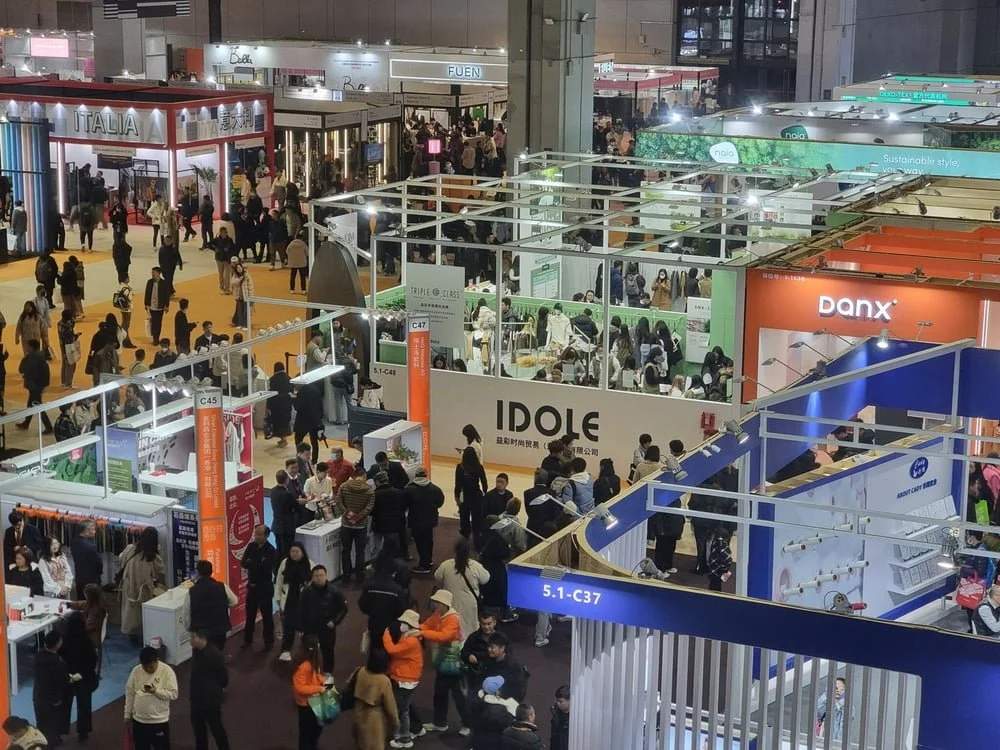Sustainability takes center stage at Chic Shanghai
Shanghai, renowned as the hub of the global textiles and apparel industry, welcomed industry players from around the world for the highly anticipated Intertextile and Chic trade shows, commencing on March 6. Against the backdrop of a challenging year marked by sluggish consumption in both Western markets and China, the event unfolded with cautious optimism, reflecting the resilience and adaptability of the sector amidst turbulent times.
Hosted at the sprawling 150,000-square-meter National Exhibition & Convention Centre (NECC), the shows transformed the venue into a bustling city of commerce, housing over 4,000 exhibitors and featuring a diverse array of fabric producers and fashion brands. While the exhibitions showcase a blend of Asian and European expertise, they predominantly spotlight China's prowess as the epicenter of global manufacturing.
Acknowledging the industry's recent trials, Chinese companies at the forefront of the shows are candidly addressing the setbacks endured over the past four years, including factory closures, fluctuating orders, and the reverberating impacts of the pandemic. Despite these challenges, there are glimpses of optimism on the horizon. The return of regular clients on the opening day of Intertextile signals a promising trend, with existing partnerships being revitalized and renewed.
Anupam Agrawal, head of the yarn business at Indian conglomerate Indorama, observes hopeful signs amidst the industry's recovery journey, emphasizing the need for producers to differentiate themselves in a competitive landscape. This sentiment resonates with exhibitors' increasing focus on social and environmental responsibility, prominently displayed through certifications and sustainable initiatives showcased throughout the shows.
Intertextile's dedicated sections on sustainable materials and CSR innovations underscore the growing emphasis on sustainability within the industry. With Chinese textile manufacturers embracing initiatives to reduce their environmental footprint, the integration of sustainable practices into product development processes is poised to shape the future of fashion in China.
As the industry navigates challenges such as rising energy costs and economic uncertainties, the commitment to sustainability emerges as a beacon of hope, guiding the sector toward a more resilient and responsible future. Shanghai's textile trade shows serve as a platform for collaboration, innovation, and collective action, reaffirming the industry's unwavering dedication to sustainable growth and global leadership.


